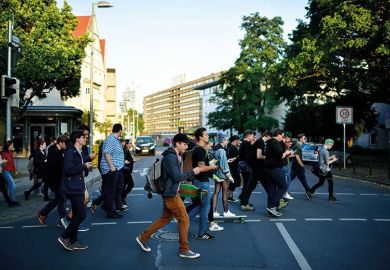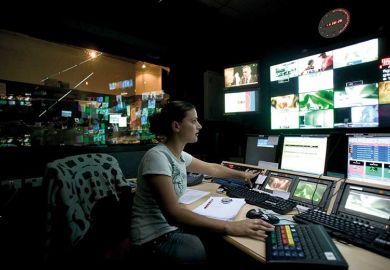It was recently reported that print book sales had increased again in 2018, after three years of modest growth. Happy publishers, and happier printing firms, pointed out that e-book sales had been in equally modest decline over the same period, while sales of Kindles and similar e-reader devices were significantly lower than the 23 million worldwide peak attained in 2011.
Such figures conceal as much as they reveal. Those 2018 print book sales were led by an unrepeatable blockbuster, Michelle Obama’s Becoming ; the e-book reader now tends to use her smartphone rather than the clunky Kindle. But the “digital literary sphere” explored perspicaciously by Simone Murray is not merely that of the e-book and its delivery systems. Print sales revived because bookselling has become fully integrated into the world of communications technologies and social media.
This means that authors live in a gig economy world where publishers have outsourced publicity to those they publish; much of the burden of marketing now relies on writers’ self-promotion. They are expected to maintain contact with readers across all currently fashionable social media, integrating this aspect of the performance of authorship with public appearances at signings or festivals. They are also expected to do all this within accepted ethical boundaries, never crossing the line from transparent self-promotion to the informal cybercrime of anonymised self-reviewing. Many authors would prefer to be getting on with the next book; all have noted that the more publishers’ marketing costs are transferred to them, the lower their earnings as writers.
Those readers, meanwhile, have become more powerful. Fan communities act as pressure groups, lobbying authors for changes in plot and character; many readers have become semi-professional critics, their blogs, vlogs and reviews affecting the prospects of that most challenged profession, the book reviewer, while raising a question mark about the status of another challenged profession, that of academic literary critic. A glance through the first 30 of the 5,500 or so Amazon reviews of Pride and Prejudice reveals many shades of appreciation, none of which owes anything to the poststructuralist verities that would place author alongside plot and character as minor partners in the game of textual elucidation.
Noting these shifts, Murray does not argue that reader reviews directly challenge literary critical authority (indeed, they are insignificant compared with those of university bosses keen to replace “elitist” literary appreciation with creative writing programmes better suited to the business training model which, chimera though it is, continues to transform higher education). Instead, she argues that scholarship in the digital humanities must come to terms with these changes: the text itself should be examined only as part of the “literary paratext” of authorial communications, reader interactions, cover designs, book series and back cover endorsements that habituate the reader to the world of the text. These are cultural expectations among digital native readers, even those who proceed from online endorsements to buying the print version of the text at the heart of the paratext. All this should be the object of study, if the humanities is to remain a genuinely critical project.
Andrew Blake is associate lecturer in magazines and publishing at the University of the Arts London.
The Digital Literary Sphere: Reading, Writing, and Selling Books in the Internet Era
By Simone Murray
Johns Hopkins University Press
256pp, £29.50
ISBN 9781421426099
Published 26 November 2018
Register to continue
Why register?
- Registration is free and only takes a moment
- Once registered, you can read 3 articles a month
- Sign up for our newsletter
Subscribe
Or subscribe for unlimited access to:
- Unlimited access to news, views, insights & reviews
- Digital editions
- Digital access to THE’s university and college rankings analysis
Already registered or a current subscriber?








